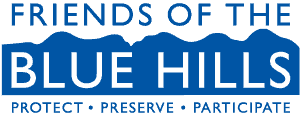Henry David Thoreau, famous for his publications such as Walden and Civil Disobedience, was also a man very much invested in the study of biology. Not only did he collect various samples for the Boston Society of Natural History (such as bird eggs and nests), but he also maintained what would turn out to be very important records of seasonal changes. The study of the cyclical changing of the seasonal flora and fauna in relation to climate and habitat is called phenology and Thoreau took some of the most detailed phonological notes of his time. In Blue Hills A-Live, Dr. Richard Primack, author and biologist at Boston University, tells us about how Thoreau’s notes help detail the impact of climate change.
Thoreau’s notes on the seasons
Thoreau recorded many seasonal observations of the natural world in Concord, MA, just a few miles north of the Blue Hills. Some of the occurrences that Thoreau noted included regular events that we associate with the spring—such as ponds thawing, plants budding, birds arriving and nesting, and the appearance of flowers, butterflies, and other creatures. He also made note of atmospheric and meteorological events, such as when snow was disappearing, large rainstorms, and hot days. But how is this useful today?

Photo credit to Kathy Thrun of Quincy, MA.
…tells us how the seasons are changing… but some animals aren’t.
The interesting methodological approach that Dr. Primack and his team have uncovered is in making comparisons between Thoreau’s notes and modern day phenology. For example, Thoreau had noted certain plants would bud at the same time that a species of bird would arrive. Comparing these same species today, we notice that this same species of bird tends to arrive at the same time as during Thoreau’s day, but the plants are budding earlier due to climate change. This means that modern day birds aren’t timing up with other seasonal events, such as insect booms. This can cascade into an abundance of insects that destroys other parts of the ecosystem and disrupt the food chain.
Watch the video to learn more.






